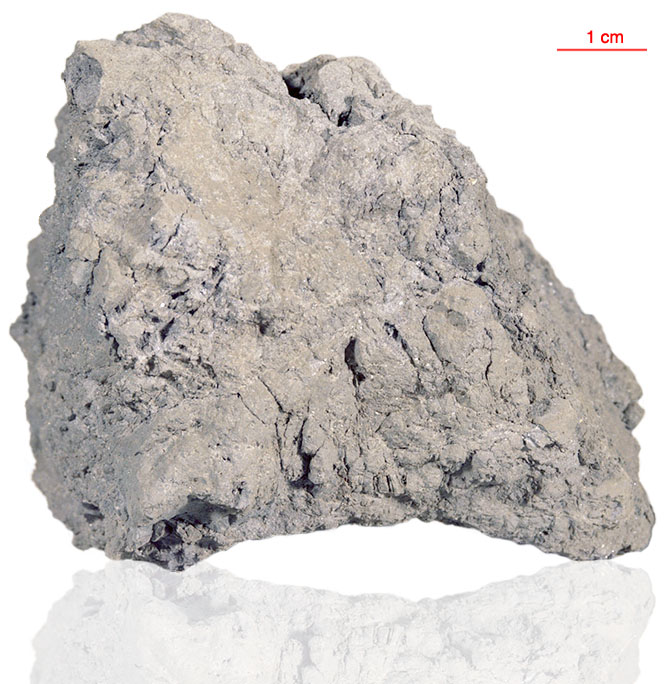
Fact sheet
72135 has been given a few different names: an olivine basalt cataclasite, a microbreccia, and a welded tuff or volcanic breccia perhaps formed during lava fountaining. It is a monomict basaltic breccia in which individual fragments range from fine-grained, quenched basalt to spheres and irregular shards of orange glass. The texture is variolitic with a groundmass of quenched pyroxene, ilmenite and plagioclase. Patches up to 3.5 mm containing coarser pyroxene are scattered though the rock. Ilmenite (sometimes with armalcolite cores) and skeletal olivine form microphenocrysts. Our thin section shows clasts of basalt (rotations 1 & 2) separated by a dark, glassy matrix containing orange glass clasts and abundant quenched ilmenite crystals.
The sample weighed 337 grams before analysis and has not been dated.
Further details of this and other Apollo samples are here: http://curator.jsc.nasa.gov/lunar/
Apollo 17, the final manned landing mission, had two objectives: to obtain samples of ancient rocks from the lunar highlands and to look for evidence of younger volcanic activity on the valley floor.
This small Collection contains material deriving from both periods, including igneous rocks around 4.3 billion years old from the lunar highlands as well as younger volcanic samples dating from about 3.6 billion years ago.
Apollo 17 was launched on 7 December 1972.






